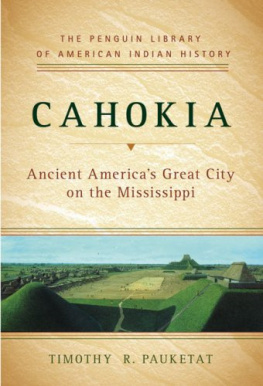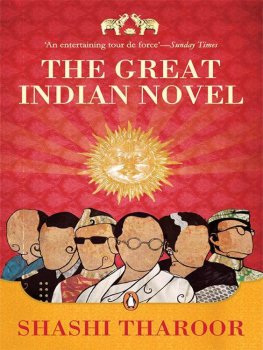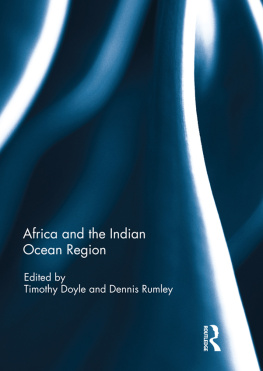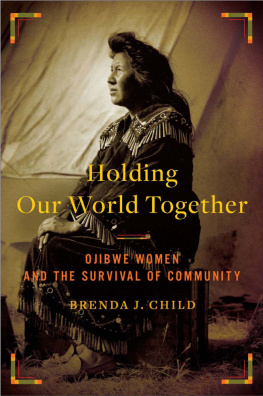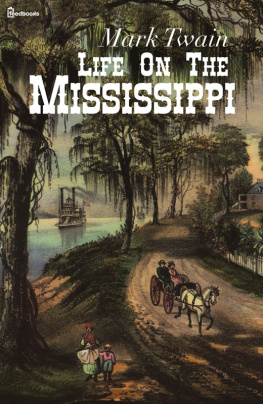Table of Contents
THE PENGUIN LIBRARY OF AMERICAN INDIAN HISTORY
OTHER TITLES IN THE PENGUIN LIBRARY OF AMERICAN INDIAN HISTORY
The Cherokee Nation and the Trail of Tears
Theda Purdue and Michael D. Green
The Shawnees and the War for America
Colin G. Calloway
American Indians and the Law
N. Bruce Duthu
Iroquois Diplomacy on the Early American Frontier
Timothy J. Shannon
The Lakotas and the Black Hills
Jeff Ostler
Ojibwe Women and the Survival of Indian Community
Brenda J. Child
GENERAL EDITOR: Colin G. Calloway
ADVISORY BOARD:
Brenda J. Child, Philip J. Deloria, Frederick E. Hoxie
VIKING
Published by the Penguin Group
Penguin Group (USA) Inc., 375 Hudson Street,
New York, New York 10014, U.S.A.
Penguin Group (Canada), 90 Eglinton Avenue East, Suite 700,
Toronto, Ontario, Canada M4P 2Y3
(a division of Pearson Penguin Canada Inc.)
Penguin Books Ltd, 80 Strand, London WC2R 0RL, England
Penguin Ireland, 25 St Stephens Green, Dublin 2, Ireland
(a division of Penguin Books Ltd)
Penguin Books Australia Ltd, 250 Camberwell Road, Camberwell,
Victoria 3124, Australia
(a division of Pearson Australia Group Pty Ltd)
Penguin Books India Pvt Ltd, 11 Community Centre, Panchsheel Park,
New Delhi - 110 017, India
Penguin Group (NZ), 67 Apollo Drive, Rosedale, North Shore 0632,
New Zealand (a division of Pearson New Zealand Ltd)
Penguin Books (South Africa) (Pty) Ltd, 24 Sturdee Avenue,
Rosebank, Johannesburg 2196, South Africa
Penguin Books Ltd, Registered Offices:
80 Strand, London WC2R 0RL, England
First published in 2009 by Viking Penguin,
a member of Penguin Group (USA) Inc.
Copyright Timothy R. Pauketat, 2009
All rights reserved
Image on page 30 used by permission of Cahokia Mounds State Historic Site. Painting by Paul Bradford.
Library of Congress Cataloging-in-Publication Data
Pauketat, Timothy R.
Cahokia : ancient Americas great city on the Mississippi / Timothy R. Pauketat.
p. cm.(The Penguin library of American Indian history)
Includes bibliographical references and index.
eISBN : 978-1-101-10450-7
1. Cahokia Mounds State Historic Park (Ill.) 2. Indians of North AmericaIllinoisCahokia Mounds
State Historic ParkAntiquities. 3. Mississippian cultureIllinoisAmerican Bottom. 4. Mississippian
cultureMiddle West. 5. American Bottom (Ill.)Antiquities. 6. IllinoisAntiquities. 7. Middle
WestAntiquities. 8. Excavations (Archaeology)IllinoisAmerican Bottom. I. Title.
E99.M6815P375 2009
977.386dc22
2008054092
While the author has made every effort to provide accurate telephone numbers and Internet addresses at the time of publication, neither the publisher nor the author assumes any responsibility for errors, or for changes that occur after publication. Further, publisher does not have any control over and does not assume any responsibility for author or third-party Web sites or their content.
Without limiting the rights under copyright reserved above, no part of this publication may be reproduced, stored in or introduced into a retrieval system, or transmitted, in any form or by any means (electronic, mechanical, photocopying, recording, or otherwise), without the prior written permission of both the copyright owner and the above publisher of this book.
The scanning, uploading, and distribution of this book via the Internet or via any other means without the permission of the publisher is illegal and punishable by law. Please purchase only authorized electronic editions and do not participate in or encourage electronic piracy of copyrightable materials. Your support of the authors rights is appreciated.
http://us.penguingroup.com
In memory
of Mike, Preston, Harriet, Warren,
Al, and Chuck
THE MOTHER OF NATIVE NORTH AMERICA
IN THE EARLY HOURS before sunrise, for part of each year, the planet Venus shines as a morning star. Slowly it disappears as the rising sun turns darkness to sky blue. To the ancient Maya and others, this Morning Star was a god, the Sun-Carrier, created to transport the sun into the world of people. In ancient North America, it was viewed as a masculine deity whoat a key moment in historyassumed human form. When seen later in the year as the Evening Star, Venus was considered a feminine god. She appeared then with the setting sun, a harbinger of the night and the netherworld beyond the horizon. Sometimes seen as a creator goddess, she also took human form and, in the flesh, made history.
A thousand years ago, the Morning and Evening stars were central players in an American Indian drama, characters at once mythicsky gods with supernatural powersand human, driven by violence, politics, and religion. And this drama was at the heart of a place we now call Cahokia, ancient Americas one true city north of Mexicoas large in its day as Londonand the political capital of a most unusual Indian nation.
At that time all the stars and planets in the Northern Hemispheres night sky were visible above Cahokia, situated in a broad expanse of Mississippi River bottomland just east of what is now St. Louis, Missouri. Cahokias people looked to the Morning and Evening stars for guidance andinspired by ideas from Mesoamerica, possibly brought back from Cahokian rulers travels or priests vision questsincorporated them into a religion that would displace traditions across the American Midwest, South, and Plains.
Nowadays, one can barely see the stars at night from St. Louis. Tall buildings crowd the sky, and streetlights blot out the stars even as the growth of modern civilization erases the archaeological remains of the ancient North Americans. Still, Cahokia sits silently, awaiting the almost three hundred thousand visitors who come to the site each year. Taking in its grass-covered mounds, vast open spaces, and large watery borrow pits, they ponder the lives of the original inhabitants of North Americas largest pyramidal-mound complex, centered by what is, in fact, the third-largest pyramid in the entire New World.
At one time, there were more than two hundred packed-earth pyramids, or mounds, at Cahokia and its suburbs. More than half of these were built in a five-square-mile zone that was designed with reference to the four sacred directions and the upper and lower worlds. The pyramids were arranged around vast open plazas and were surrounded, in turn, by thousands of pole-and-thatch houses, temples, and public buildings. At its height, Cahokia had a population in excess of ten thousand, with at least twenty or thirty thousand more in the outlying towns and farming settlements that ranged for fifty miles in every direction.
From the beginnings of the Euroamerican city of St. Louis, some of the biggest and most important ancient American monuments were leveled to make way for new developments. Twenty-five mounds were destroyed in St. Louis before the Civil War. Forty-five more were taken down across the river in East St. Louis shortly thereafter. Scores were lost in Cahokia proper, including the second largest, removed by steam shovel in 1930.

